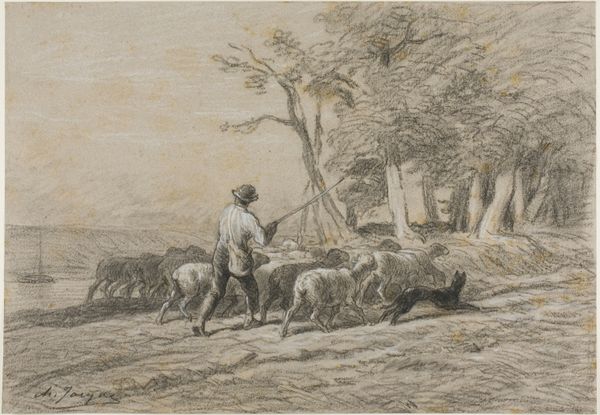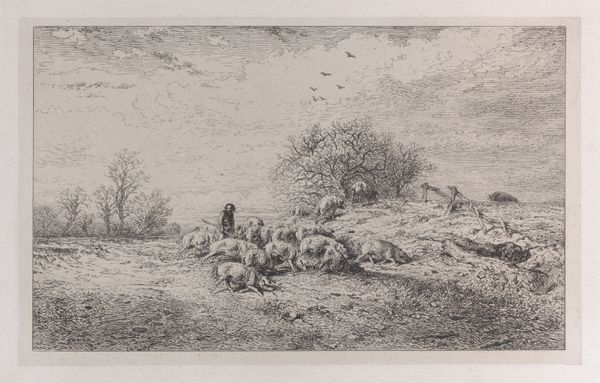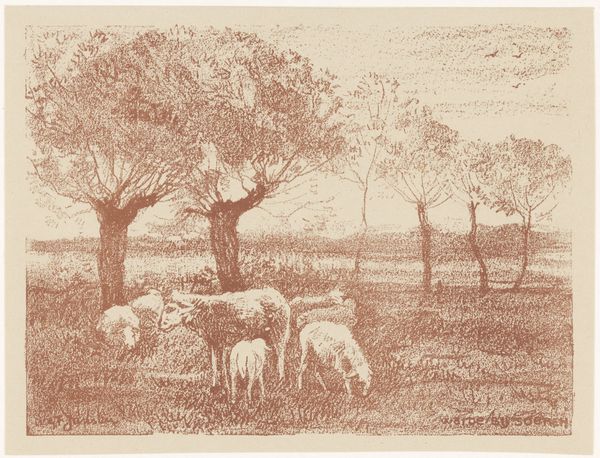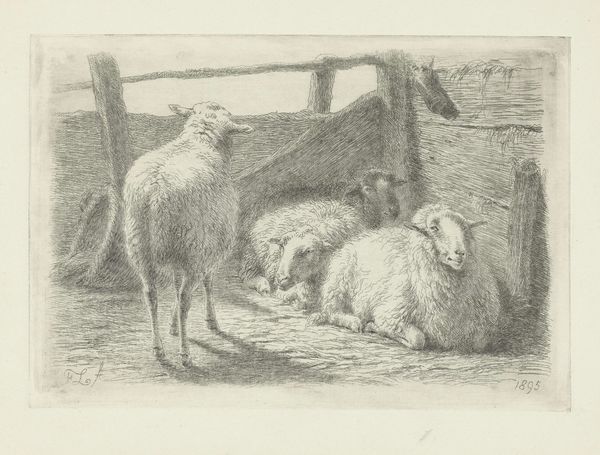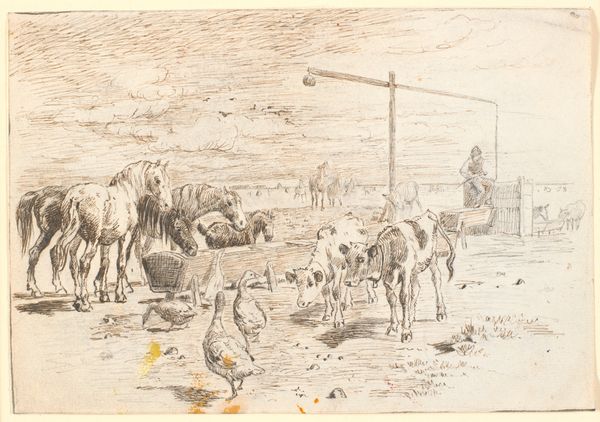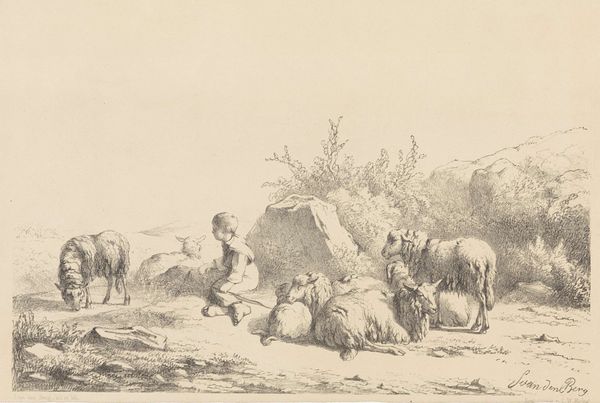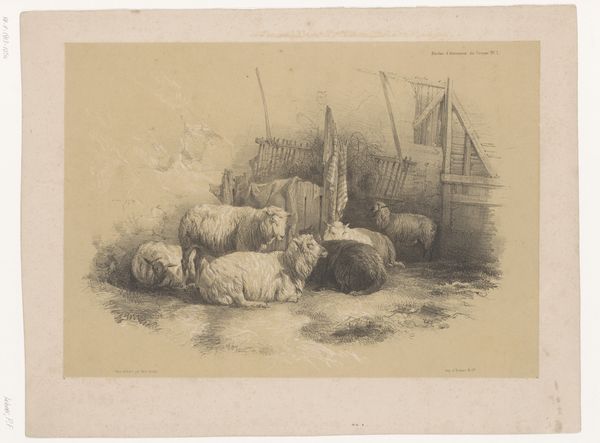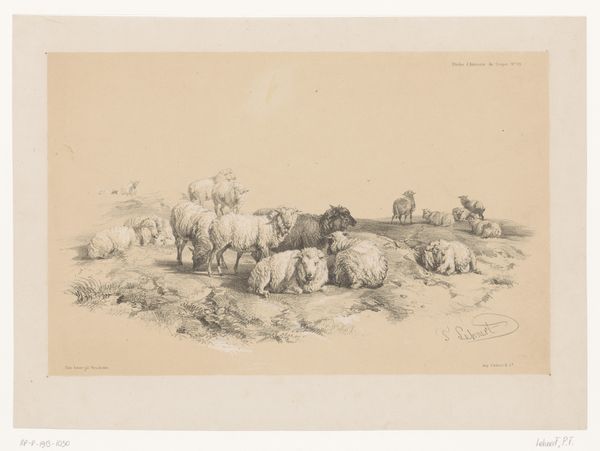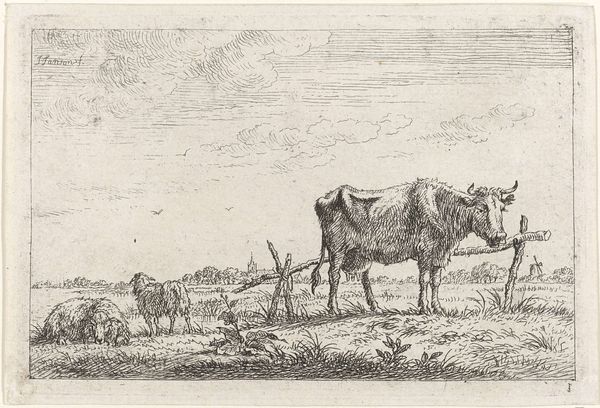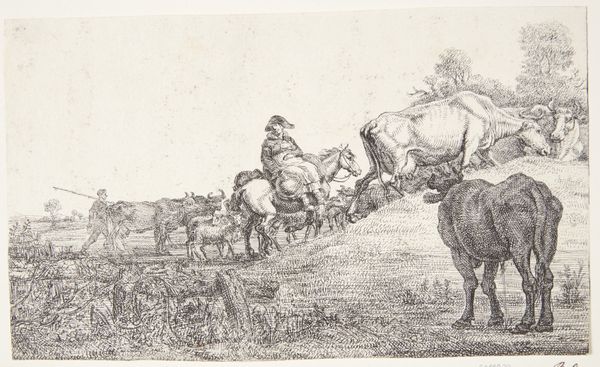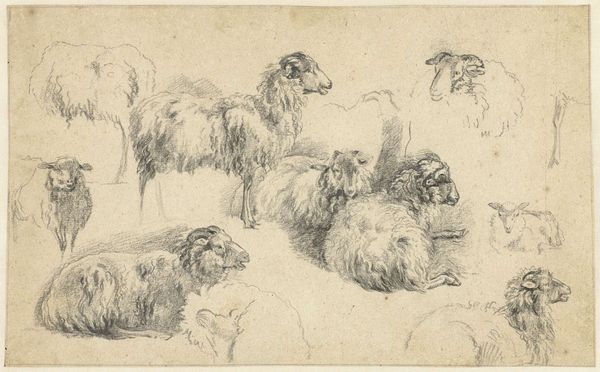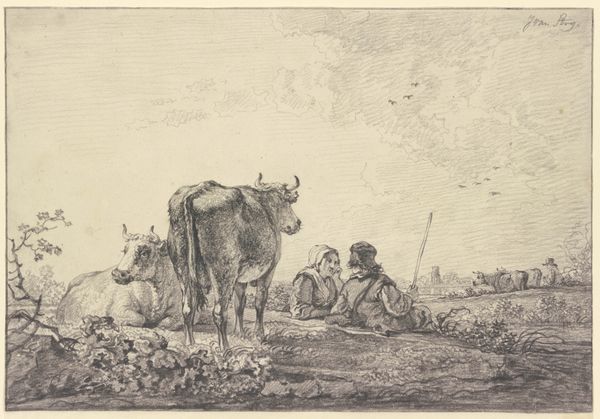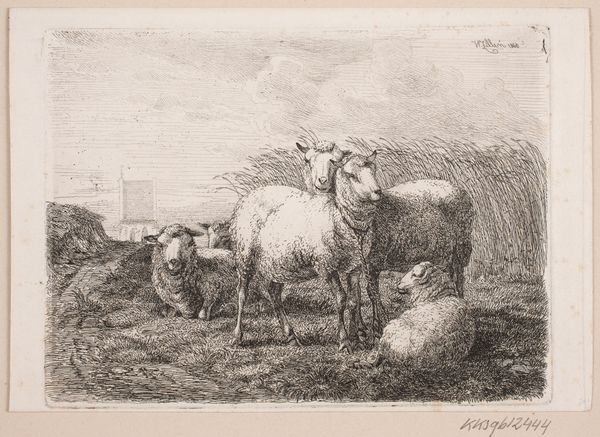
drawing, print, paper, pencil, chalk, graphite
#
portrait
#
drawing
# print
#
pencil sketch
#
landscape
#
figuration
#
paper
#
pencil
#
chalk
#
graphite
#
genre-painting
#
realism
Dimensions: 174 × 257 mm
Copyright: Public Domain
Editor: So, this is "Shepherdess and Sheep" by Philipp Peter Roos. It’s a drawing – looks like pencil and maybe some chalk – on paper. It's got a gentle, almost hazy quality. What’s striking to you about this work? Curator: What I find interesting is the social context implied here. Roos was part of the *Bentvueghels*, a group of primarily Dutch and Flemish artists working in Rome. How does this idealized pastoral scene function within the artistic and social networks they cultivated? Consider the implications of artists, often from urban backgrounds, embracing these seemingly simple, rural motifs. Is it genuine appreciation, or something more complex? Editor: That’s interesting, I hadn't thought of it like that. I guess it’s easy to romanticize the countryside when you’re not actually living there. Were these kinds of images popular? Curator: Genre paintings were increasingly marketable, allowing artists to appeal to a broadening audience. Roos's inclusion of a female shepherdess touches upon themes of labor and rural virtue. However, think about the power dynamics. Who is consuming these images and what fantasies might they fulfill about peasant life? The artistic decisions – the soft focus, the lack of harsh realism – tell us a lot about how Roos and his patrons want the pastoral life to be seen. Editor: So, it's less about a literal depiction and more about a constructed idea of rural life being bought and sold. Curator: Precisely. And remember, images reinforce ideology. They subtly shape our understanding of the world and the social order. Editor: Wow, I will never look at a peaceful landscape quite the same way again. It’s like uncovering a hidden story. Curator: Exactly. That's the exciting thing about art history. We're not just looking at pretty pictures; we are analyzing how art engages in, and often perpetuates, societal power structures.
Comments
No comments
Be the first to comment and join the conversation on the ultimate creative platform.
